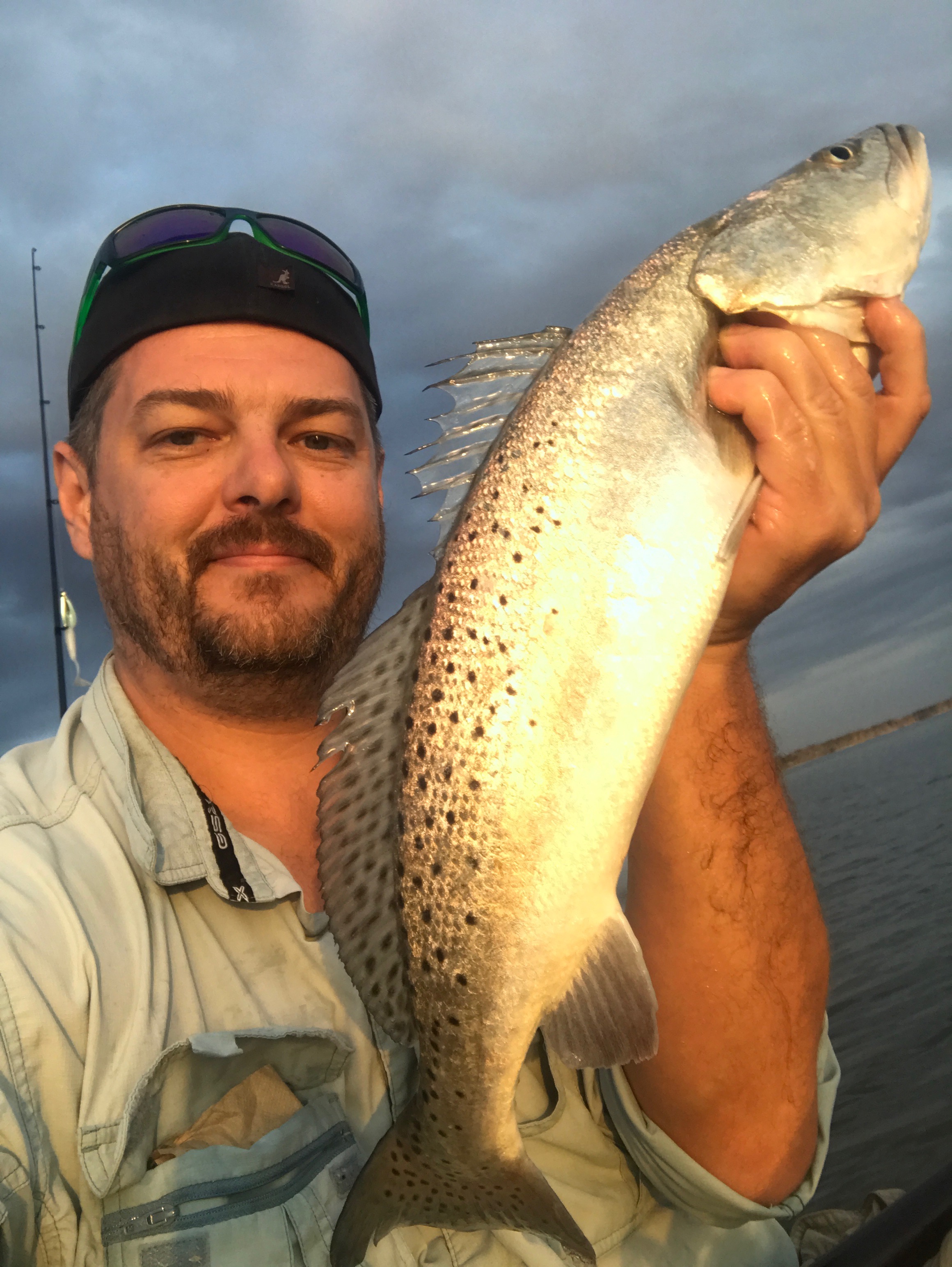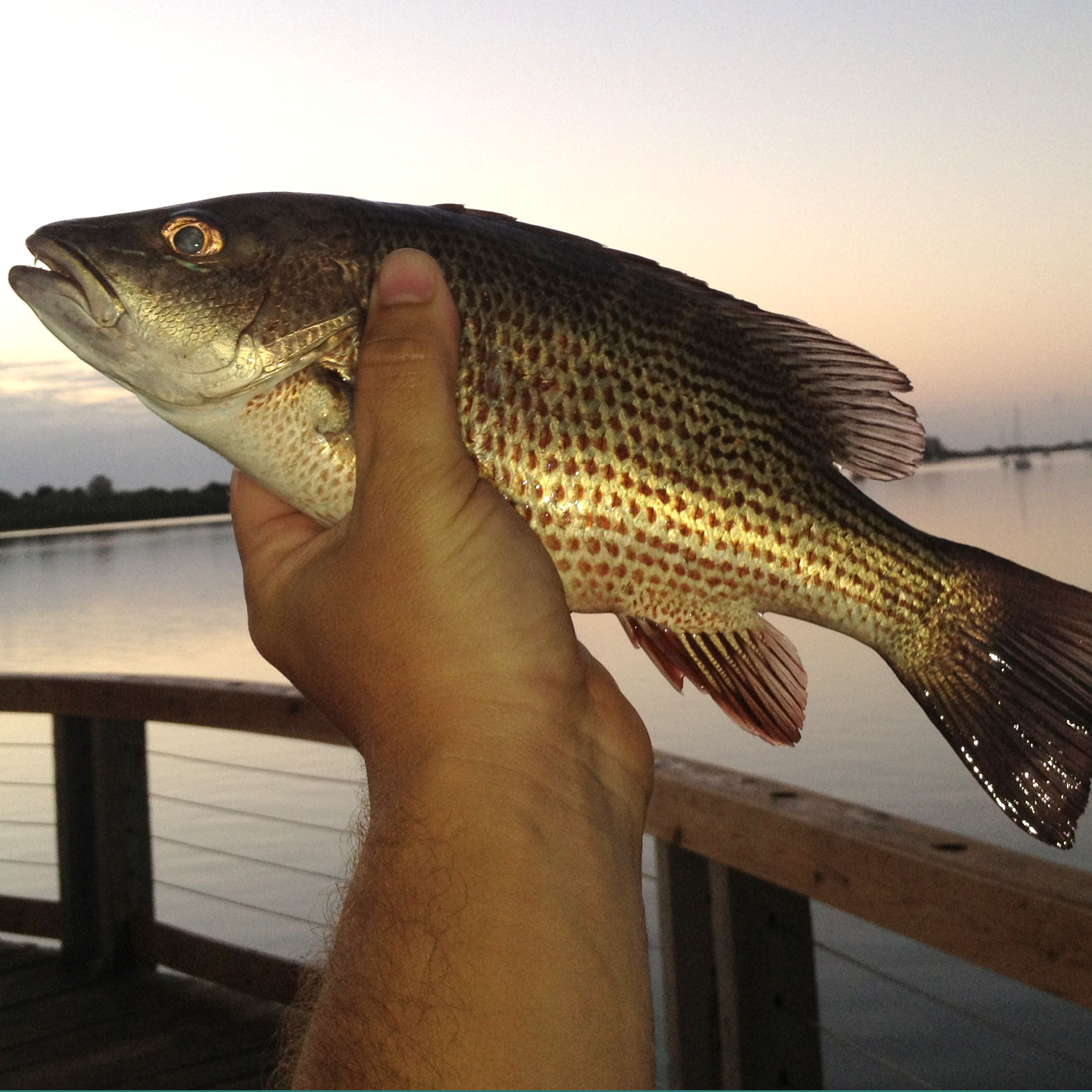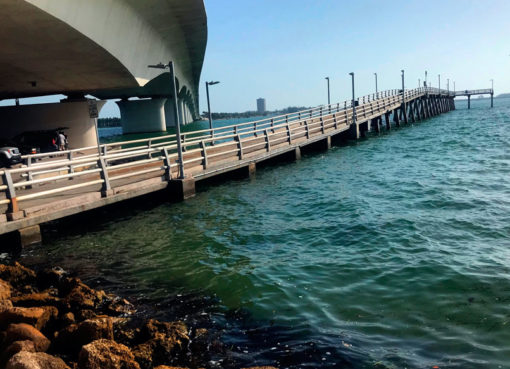Speckled Trout (also known as simply Trout) are one of the most abundant game fish found around Florida’s shores. They are a decent fight and are a table favorite among some anglers. One of the best things about trout is that they are fairly easy to find and catch during the spring here in Florida.
Where to Find Trout
Trout are found through out most of Florida’s waters. They are found in the surf, estuaries, bays, inlets, passes, lagoons and just about anywhere there is saltwater. For the shore based angler the best places to look for trout are bridges, inlets and docks. All three locations can be productive both during the day and at night, but docks with lights under them can be far more productive at night than any other location.
Trout Gear
Trout range anywhere between a few ounces and over 10 pounds (though they are rare that large) so almost any saltwater rated gear will work for trout. A popular set up is a spinning reel on a light to medium action rod. 10lb braid with a 12lb fluorocarbon leader will be enough strength to pull almost any trout away from cover and land them with out too much worry of them breaking off.
Trout Lures/Bait
Lures
Trout are active predators and willing strikers of most artificial lures. The most popular for trout are top-water plugs, soft jerk baits, soft curl tail grubs and shrimp imitations. Scented lures, such as Gulp Alive! are very successful with trout with curl tail grubs, paddle tails and plastic shrimp working very well.
Live Bait
Trout are not picky when it comes to live bait. Shrimp, finger mullet, small pinfish, scaled sardines and mud minnows are all great choices. Finger mullet and live shrimp have been proven time and time again to be highly effective with trout!
How to Catch Trout
Trout are ambush predators, so the best way to catch them is to have a lure/bait cross in front of their ambush position.
Inlet Fishing
Inlets often have quite a bit of current which can work to the advantage of the trout angler. Look for any area that may hold fish, like a spoil, a deeper hole or anywhere that the current may be broken up by a rock or any other structure. Cast up current of the potential fish holding location and allow the bait to be brought passed the location. Try different depths, adding weight if necessary. Repeat this process a few times per location.
While using the current to drift your bait it is also a good idea to soak a live bait on the bottom with a 2′ leader. Any trout that is passing by on the current may stop for a snack!
Dock Fishing
Many docks will be ambush locations for trout. They will hide under the pier behind a pylon and wait for the current to bring prey past them and ambush it. A great technique while pier fishing is to cast up-current of the pier and allow the bait to drift past the pylons. Be ready for a strike once the bait nears the first pylon.
At night, if the dock has a light, that light will attract bait fish and in turn attract trout. The trout will stage just outside of the lights spread. Cast a bait up-current of the light and allow it to drift on the outskirts of the light spread. Trout will often hit the bait right as it enters the light or as it is exiting. If the bite dies after catching a few trout, allow about 30-45 minutes and try again!
Pier Fishing
Fishing from a pier it can be difficult to move baits around due to many other fishermen sharing the same area. The best bet to catch trout is to find potential locations that they will either be at or will be soon. Find ares under the pier that have pot holes or deep impressions behind a pylon, these areas will often hold trout (and many other game fish). Soak a live bait in one of these areas. While that bait is soaking, keep an eye on the surf line, from time to time trout will venture out to the trough (area between sand bars causing wave breaks). Casting a live finger mullet in there may catch you a fairly large trout!
Tips and Tricks
- Trout are aggressive strikers but have soft mouths, beware not to set the hook to aggressively to avoid ripping their mouth.
- Trout tend to run in schools of similar size, if a small fish is caught, that may be all that is in that area, move on and find the larger fish
- Trout have large mouth to body ratio and will eat baits larger than expected





